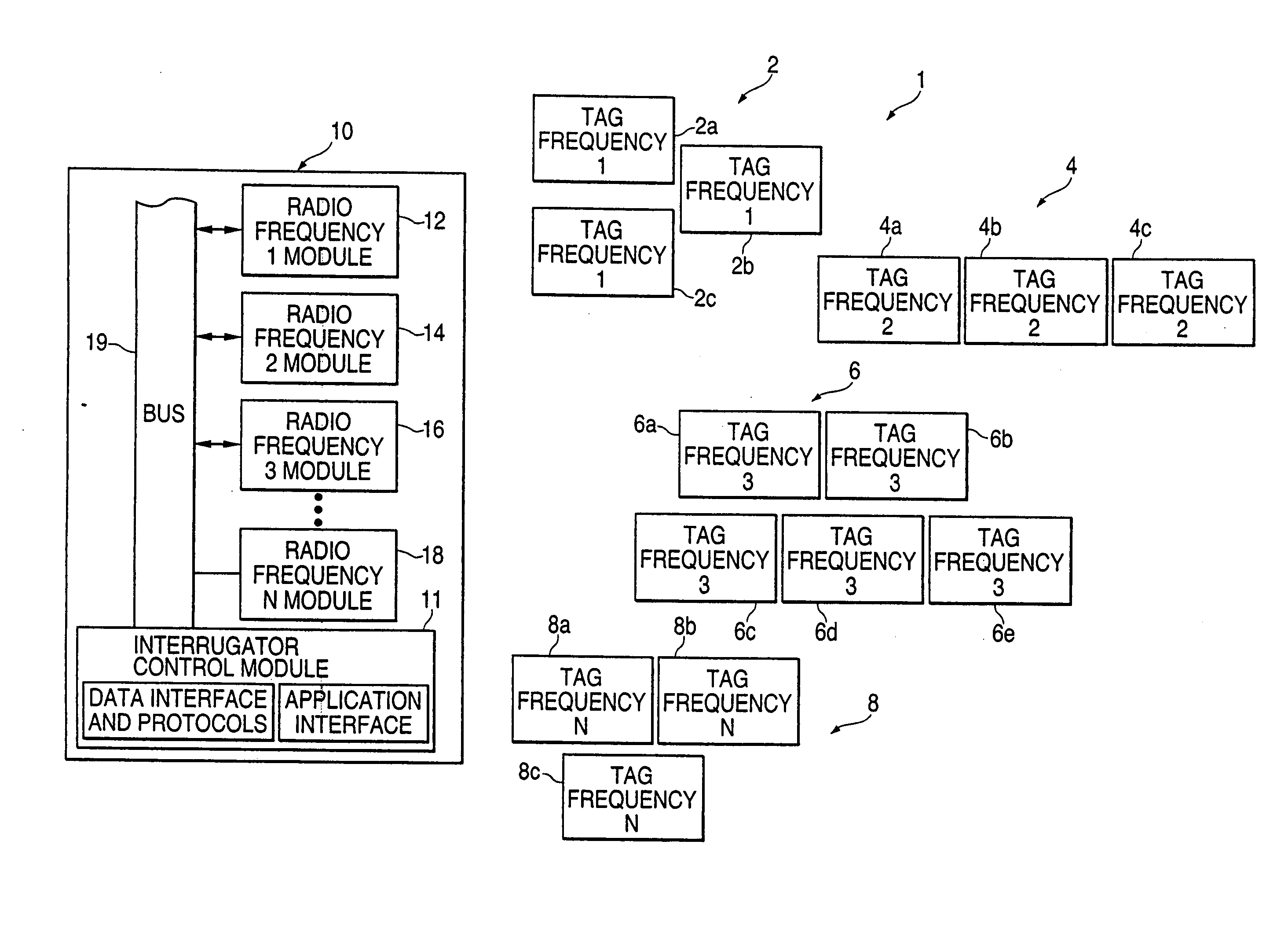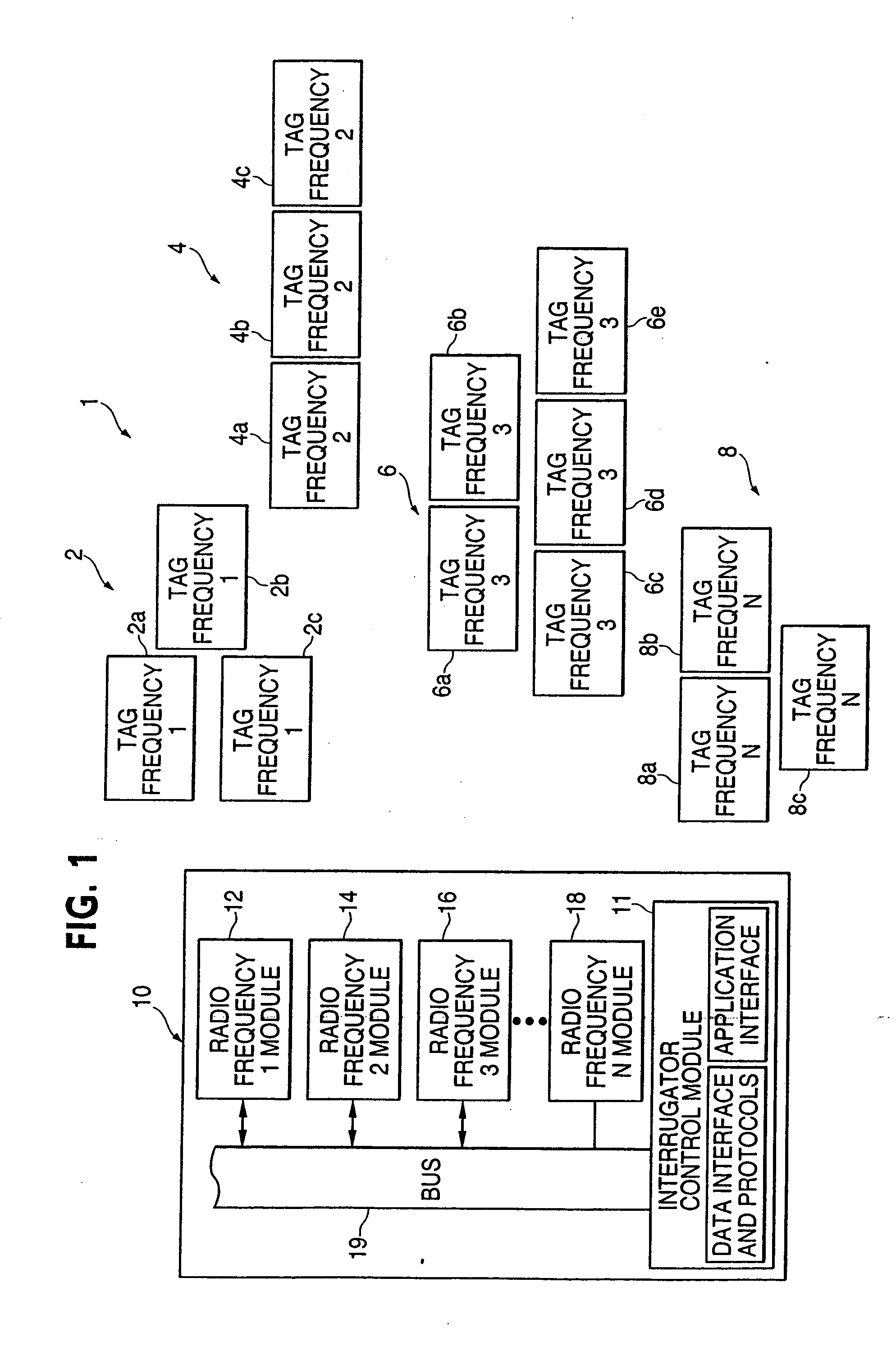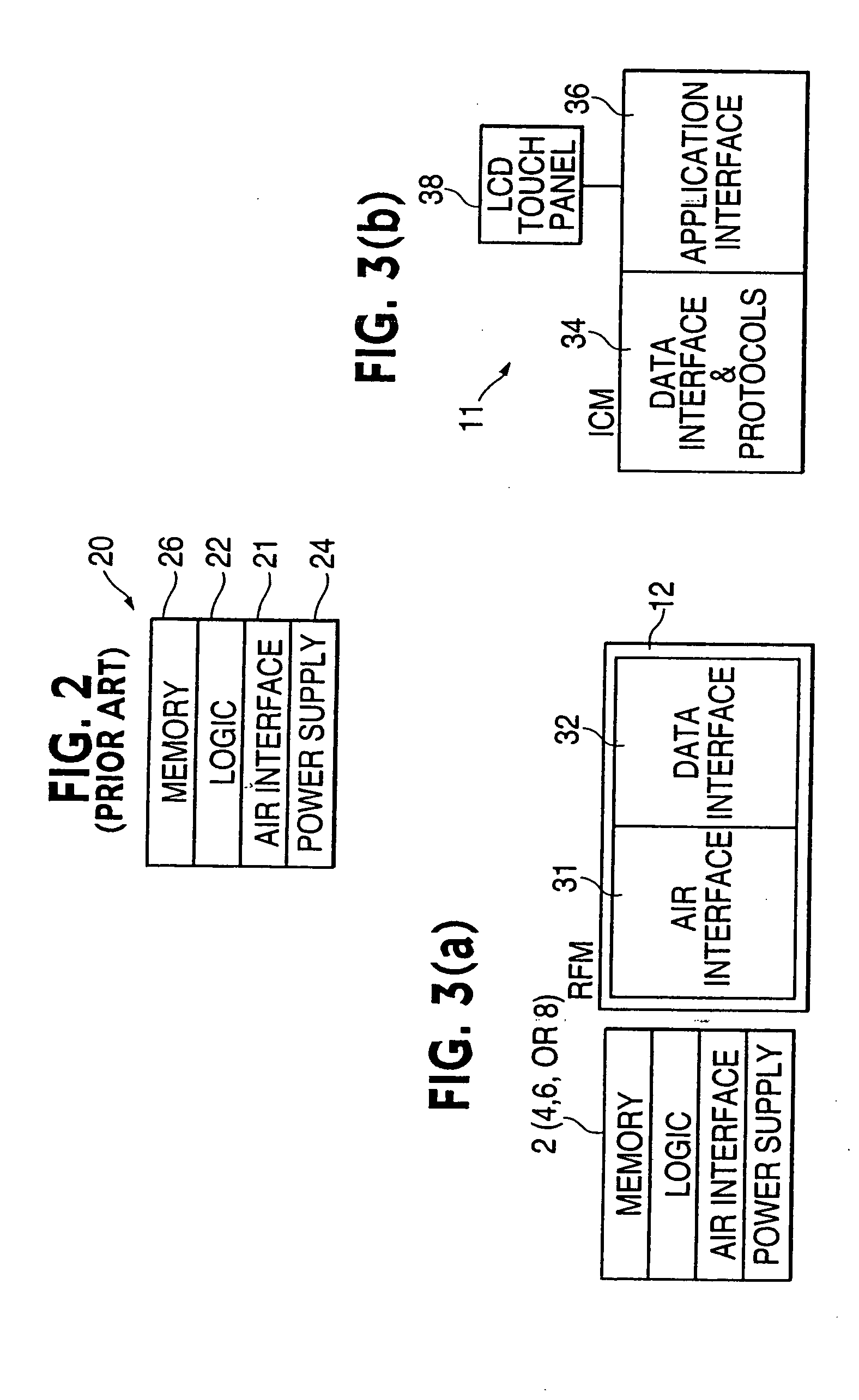System for multi-standard RFID tags
- Summary
- Abstract
- Description
- Claims
- Application Information
AI Technical Summary
Benefits of technology
Problems solved by technology
Method used
Image
Examples
Embodiment Construction
[0028] Reference is first made to FIG. 1 which shows a multiple-frequency / protocol RFID tag reader according to the present invention and indicated generally by reference 10. The multiple-frequency / protocol RFID tag reader 10 provides the interrogator in a radio frequency identification (“ID”) system 1. As shown in FIG. 1, the radio frequency identification system or RFID 1 comprises a plurality of tags. In conventional RFID systems the tags in the field for a reader all operate at the same frequency with the same tag parameters. As will be described, the reader 1 according to the present invention is suitable for interrogating tags operating at different frequencies in the radio frequency field.
[0029] The reader or interrogator 10 as shown in FIG. 1 is operable with four different frequency types of tags 2, 4, 6 and 8. The first type of tags 2, shown individually as 2a, 2b and 2c, operate at a first frequency, for example, 125 KHz. The second type of tags 4, shown individually as ...
PUM
 Login to View More
Login to View More Abstract
Description
Claims
Application Information
 Login to View More
Login to View More - R&D
- Intellectual Property
- Life Sciences
- Materials
- Tech Scout
- Unparalleled Data Quality
- Higher Quality Content
- 60% Fewer Hallucinations
Browse by: Latest US Patents, China's latest patents, Technical Efficacy Thesaurus, Application Domain, Technology Topic, Popular Technical Reports.
© 2025 PatSnap. All rights reserved.Legal|Privacy policy|Modern Slavery Act Transparency Statement|Sitemap|About US| Contact US: help@patsnap.com



